
I already wrote about the medieval town Lacoste itself a little earlier. Today I want to tell you separately about why the town is so famous and is visited by so many tourists. Namely, my review today will be about an excursion to the castle of the Marquis de Sade (France, Lacoste). Yes, you heard right, this is indeed a real castle, a real marquis, which locals today call “the ruins of debauchery.”
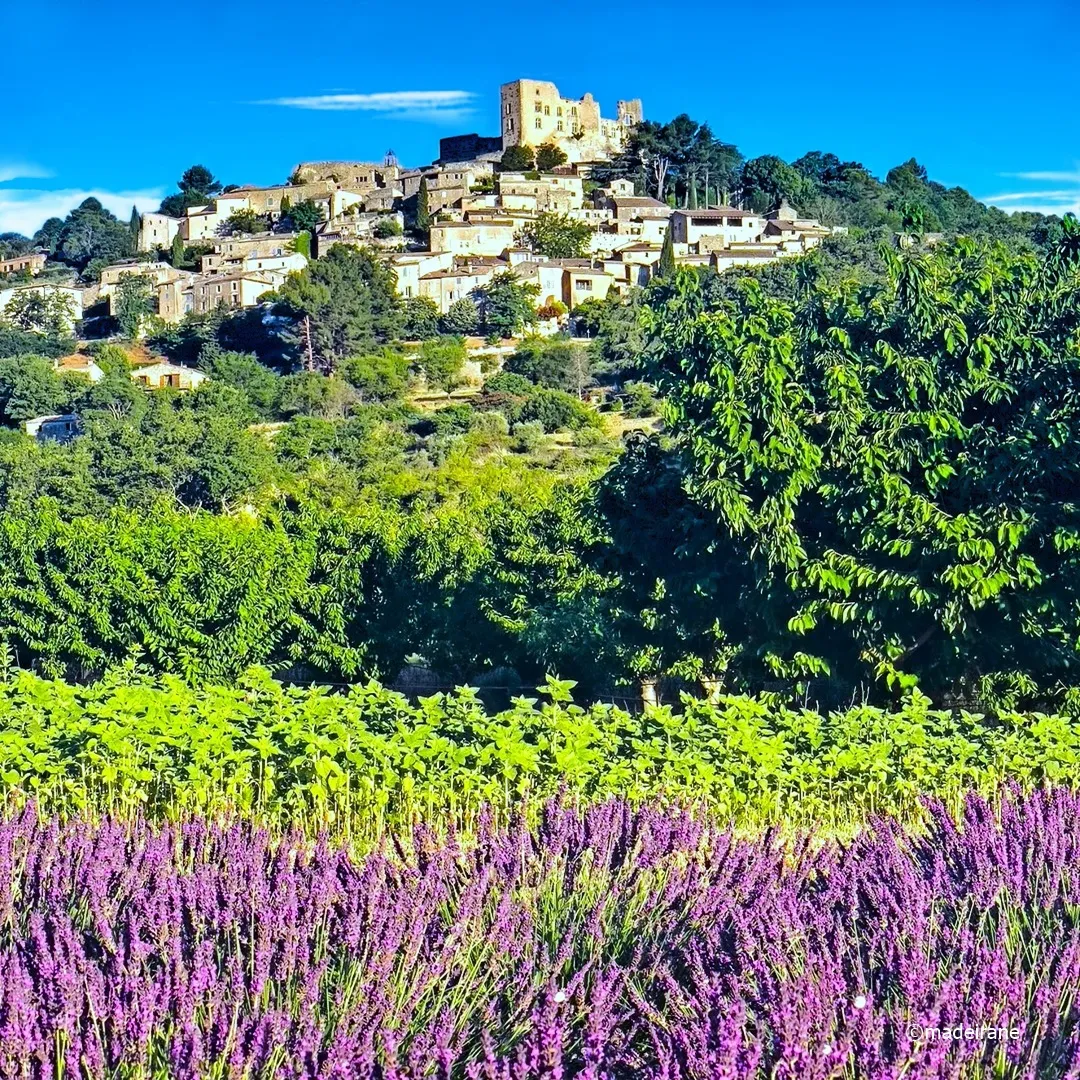
Like many castles in this region, it stands at the very top of the mountain. At the foot of the castle is the city of Lacoste. Even from the road, this castle attracts you like a magnet. We definitely wanted to see everything up close and climb to the top of this mountain.
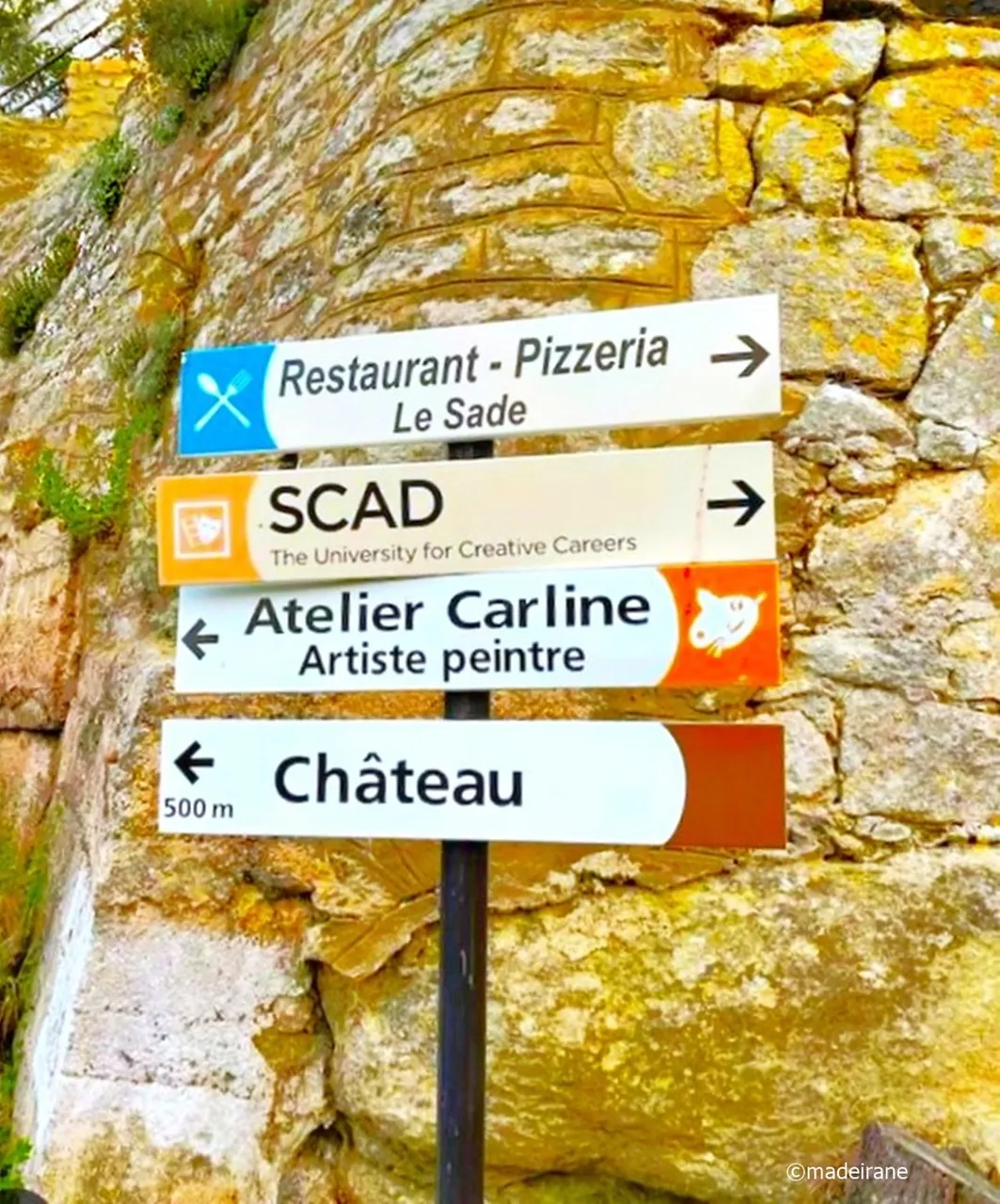
Even at the foot of this mountain, we did not know what awaited us, and even more, we had no idea what famous castle it was. Whether the castle really attracts people, it’s hard to say, but it was not possible for us to drive past. I just think that such places need to be known and visited.
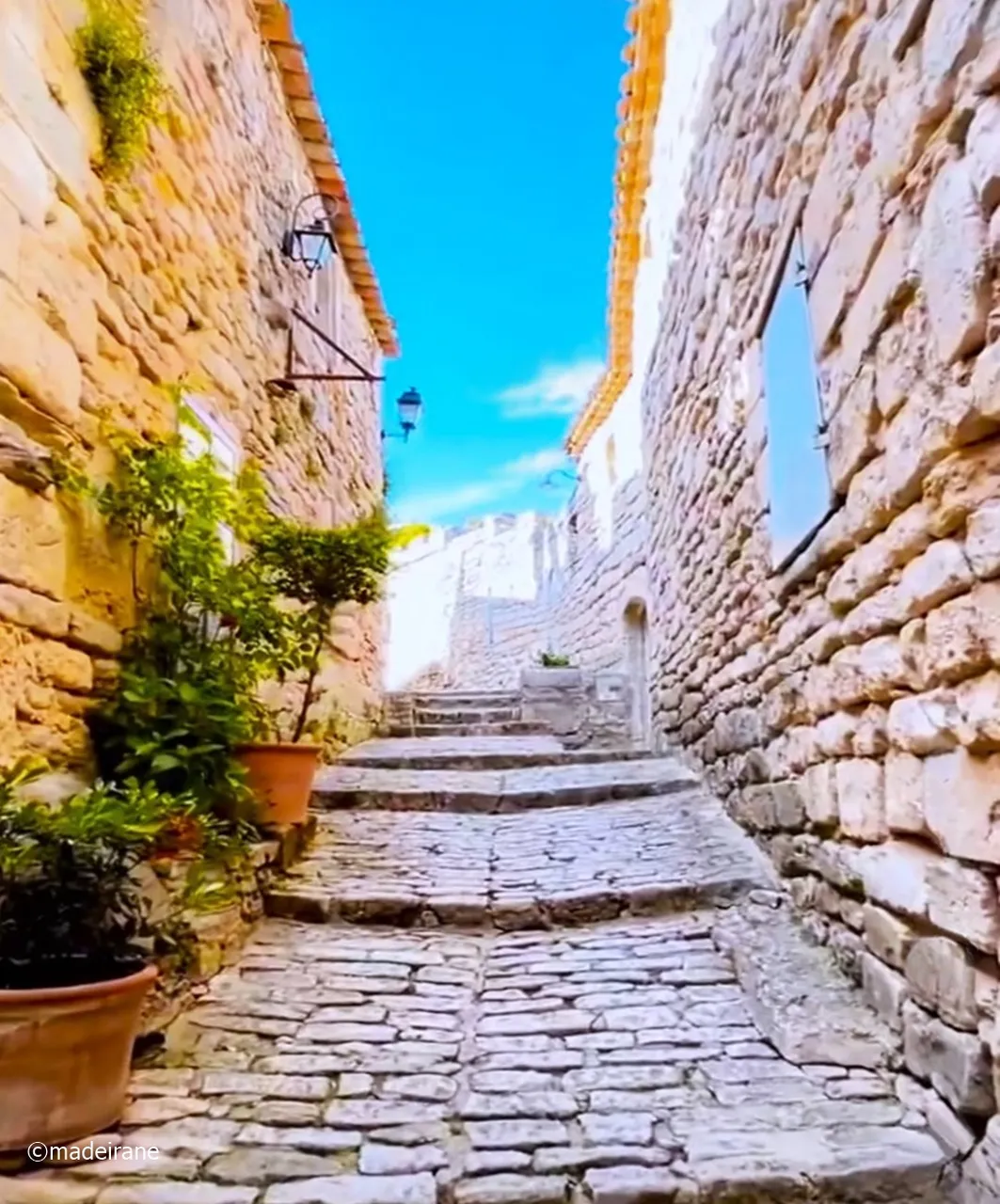
From the small winding streets of the town of Lacoste we go beyond the city wall and from here our excursion to the castle of the Marquis de Sade begins.


The path to the castle is trodden, but not paved; in fact, it is a protective ditch, which at one time was filled with water. Walking along it, we saw a new bridge to the castle.
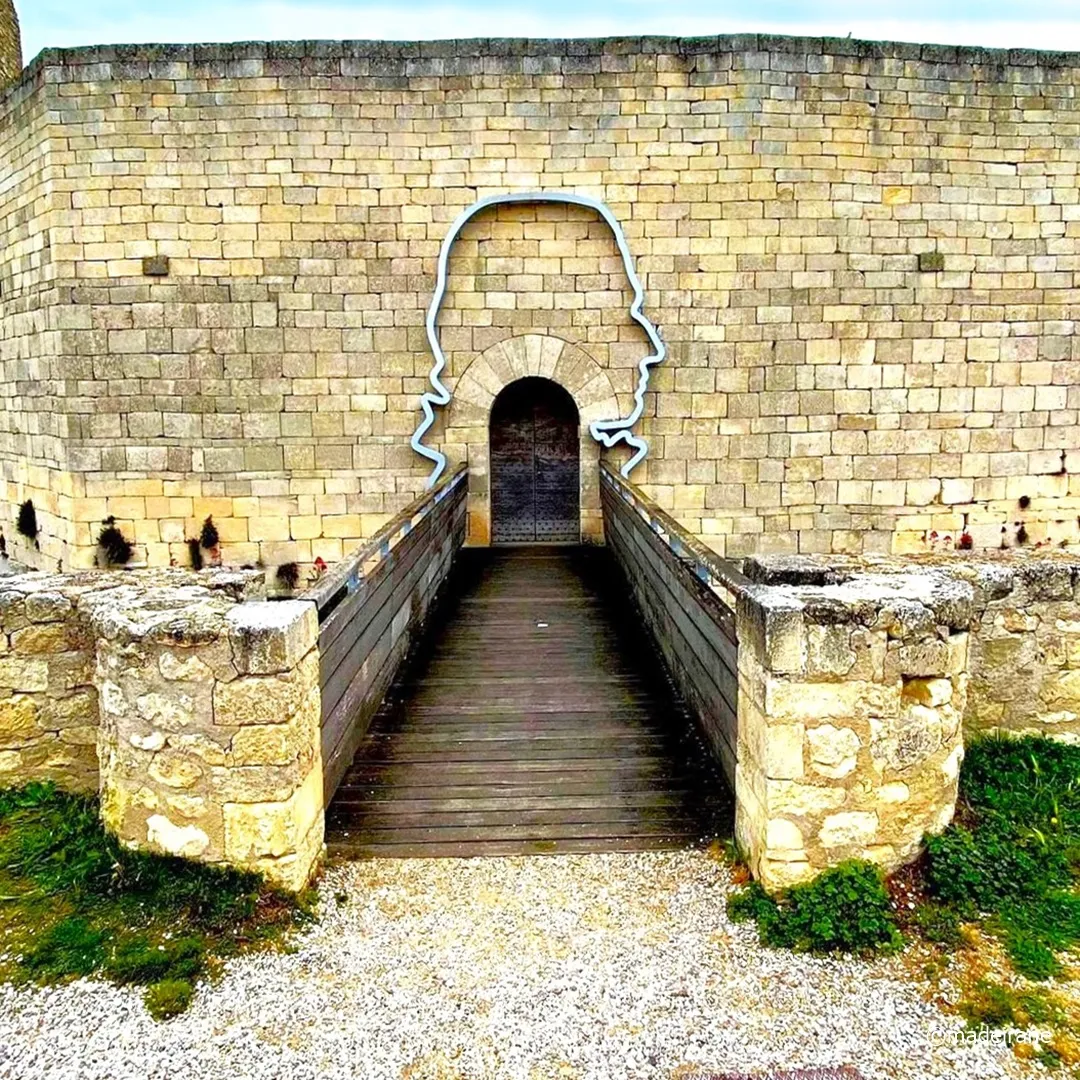
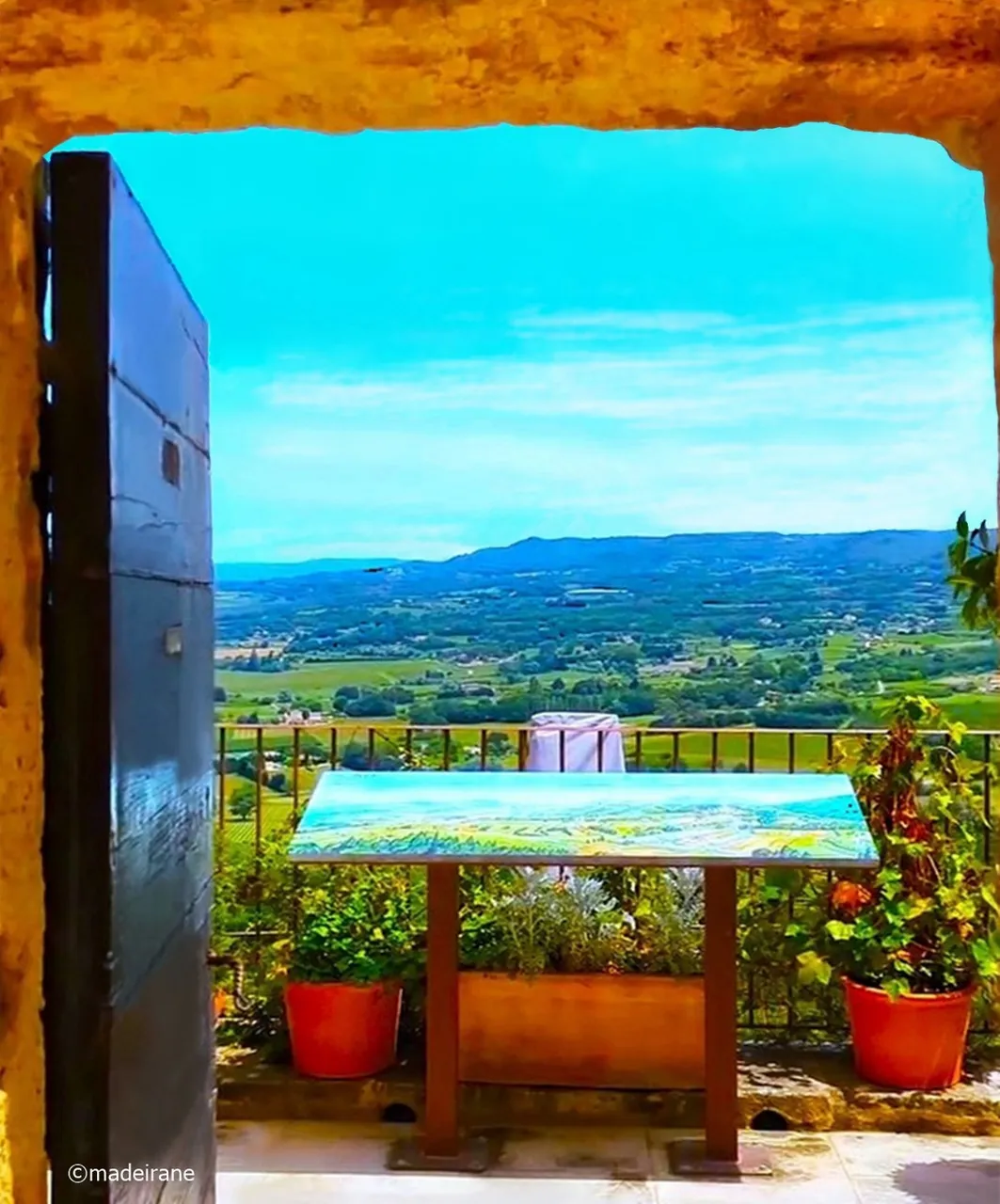
We went up to the area in front of the castle and saw several sculptures and the entrance to the castle. When we decided to climb to the castle, we had no idea what awaited us at the top as I never checked any photo before online. Therefore, modern sculptures surprised us a little.
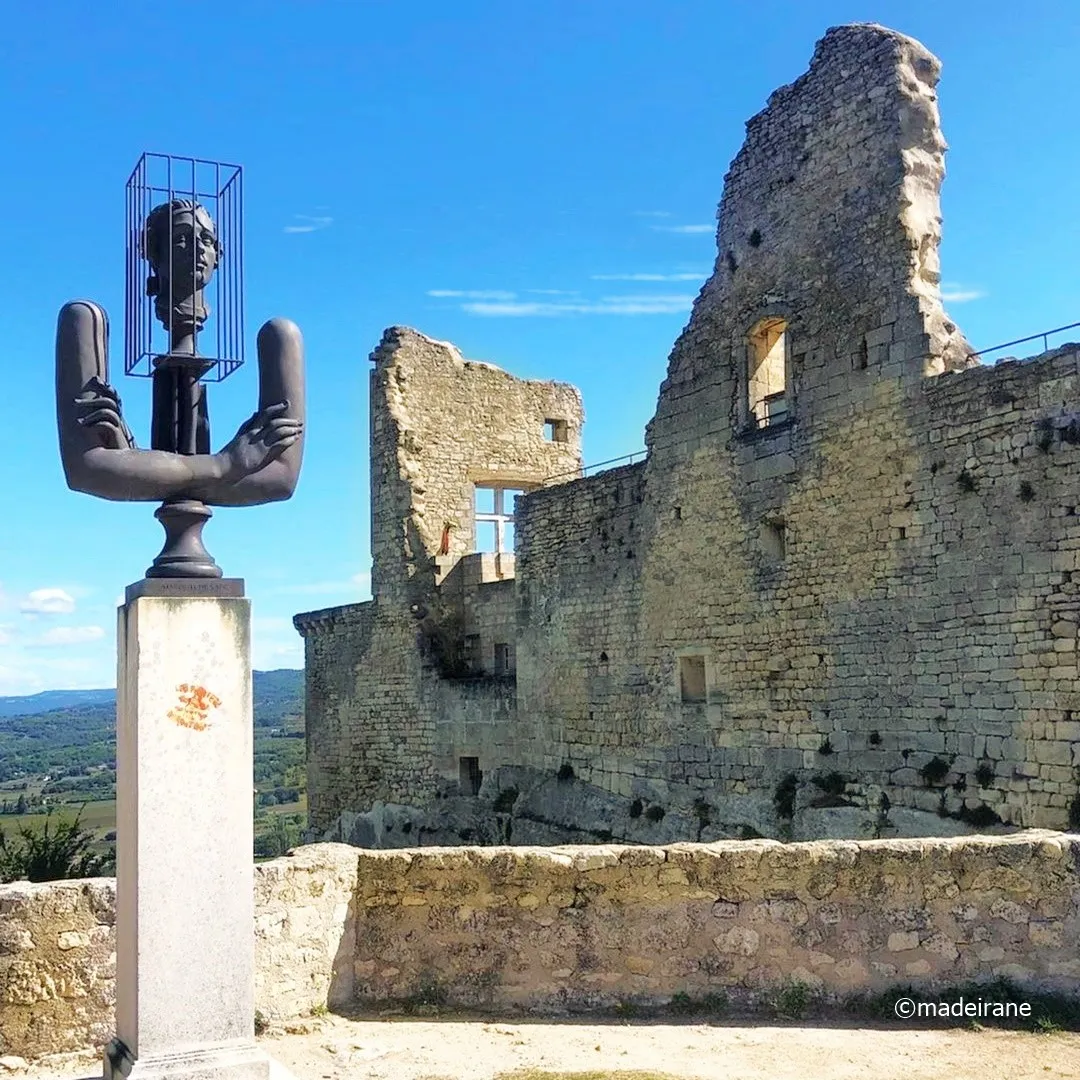
Although it is also difficult to say that the castle turned out to be a castle. Unfortunately, it is more of a ruin than the castle itself. But part of it was restored. The first sculpture we approached was this one. And it didn't tell us anything. Well, the truth was that it was not clear why there were such strange sculptures and how this castle differed from other castles in this area.
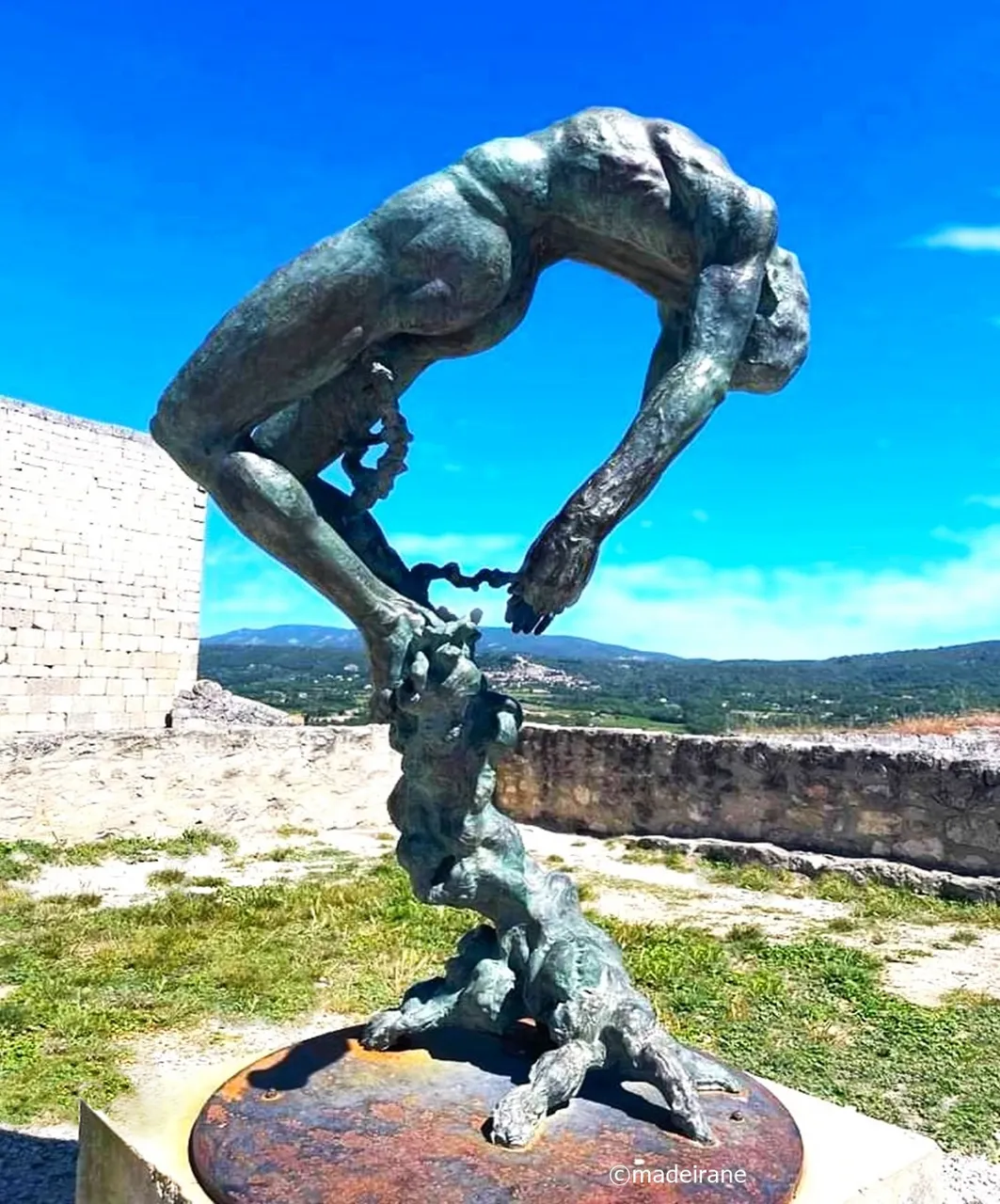

The profile of human was displayed on the entrance to the castle, and I guess it was a profile of marquis, but it seems to me that any legendary Frenchman can be applied to this profile and it will fit.

This castle was built in the 11th century and then, it was called Château Lacoste. And it belonged to the noble Simiane family. And maybe it would have remained an ordinary castle, of which there are a huge number in France. If it had not passed into the hands of the grandfather of the Marquis De Sade. There are two hypotheses about how the castle came into the possession of the de Sade family; one of the Marquis’s ancestors married Jean Baptiste and Diana Simiane in 1627. And the second is that the castle was left by Isabela Simiane to her cousin Gaspard François De Sade in 1716. But in fact, it doesn’t matter how, it matters who it belongs to.
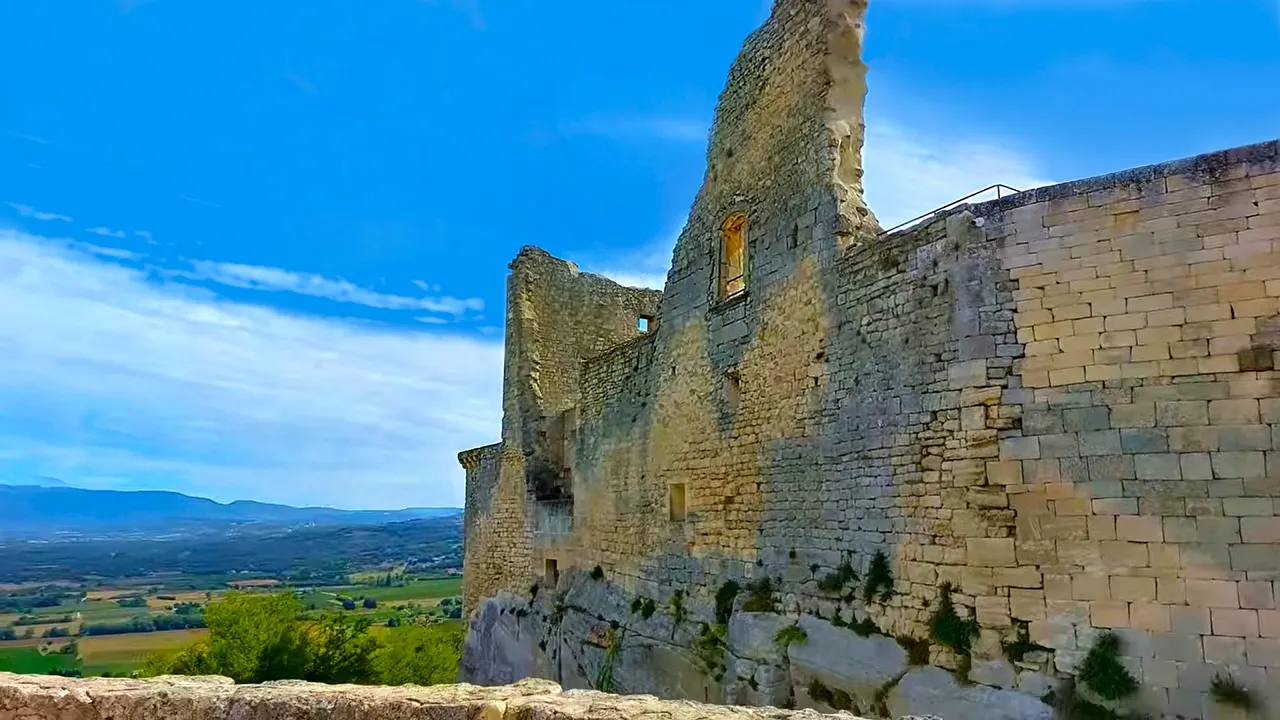
Donatien Alphonse François de Sade, whom we know as the Marquis De Sade, loved this castle very much and most of the stories described in his books actually took place in this castle.

The Marquis De Sade spent a lot of time in this castle; he rebuilt it and built a theater for 120 spectators. The castle in Lacoste was his favorite home place, where he lived, indulging in his passions.
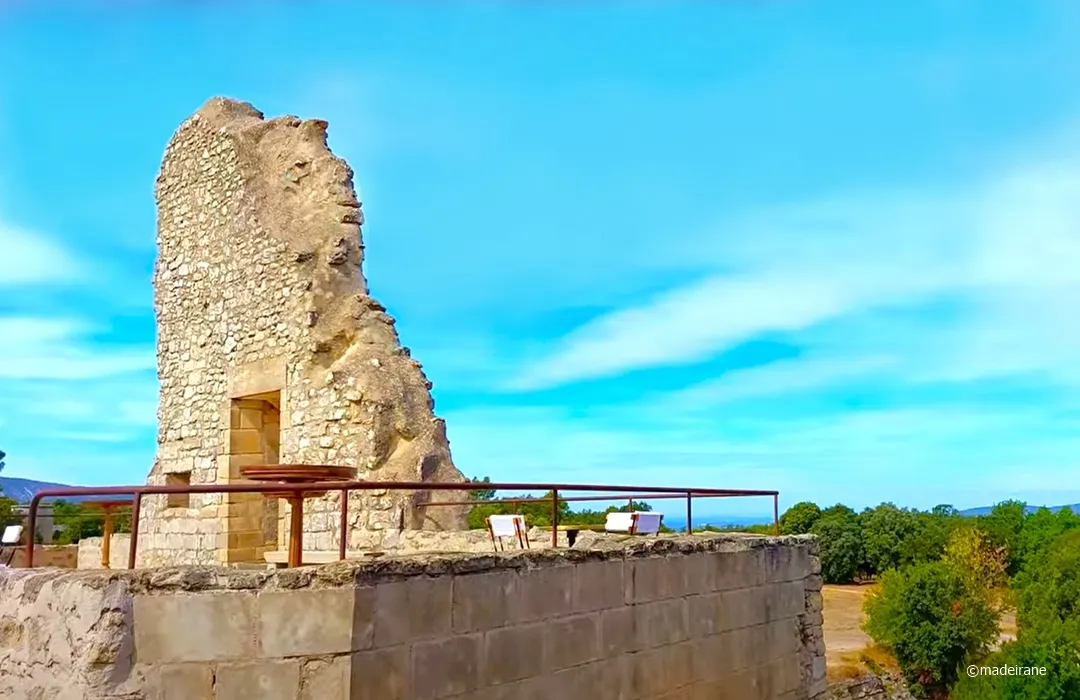
When De Sade was in France, local peasants rebelled and attacked the castle, robbed it and practically dismantled it stone by stone. And it was not surprising, since at the time when the Marquis lived in this castle, it was dark for the local residents, since a huge number of beautiful girls were kidnapped in these places, it is not difficult to guess for what purposes. Therefore, local residents had a huge grudge against the marquise.
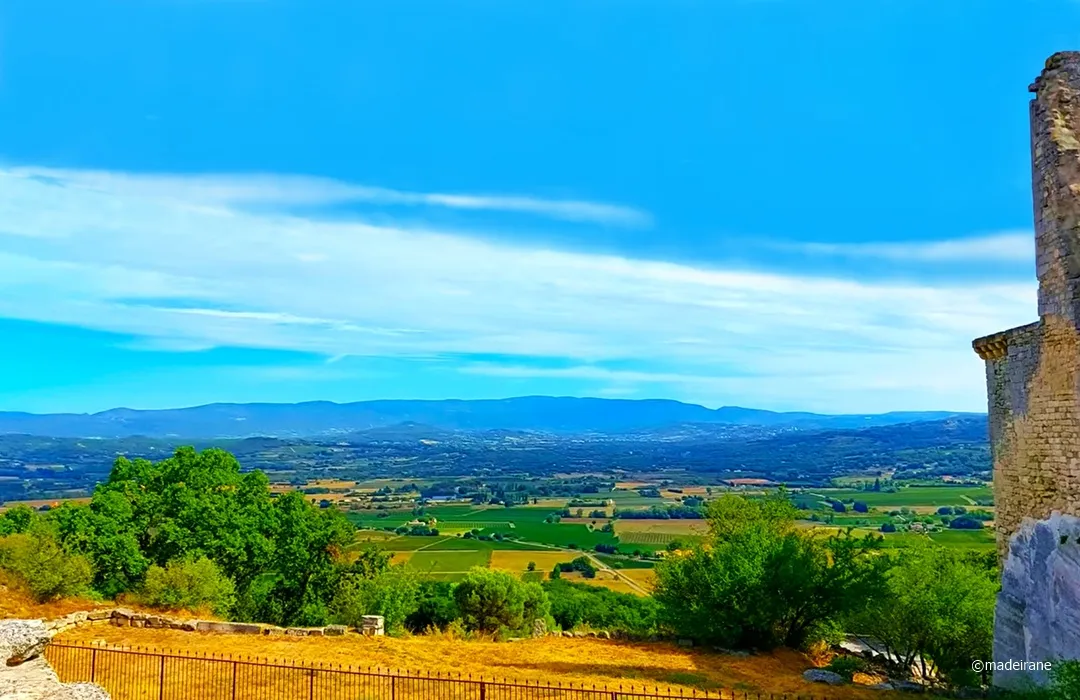
After the act of vandalism, the Marquis sold the ruins of the castle, which passed from owner to owner. And after that, the castle was put up for auction, and it was sold stone by stone. Therefore, many Lacoste houses have stones from this castle in their walls.

It was only in 1952 that the local teacher, Andre Bouer, who was captivated by the Marquis’s cult of personality, bought the entire space of the castle in parts and for many years tried to restore it. By the way, the name of the Marquis was banned in France for a long time, and only in the last century they began to speak calmly about his personality, and historians and biographers began to write about the legendary figure who immortalized himself in books. Photos, unfortunately, do not give an idea of how big the castle was.

When the teacher who was restoring the castle died, they say that at the end of his life he completely lost his mind and introduced himself either as the ancestor of the Marquis, or as the Marquis himself. His wife wrote a letter to the famous couturier Pierre Cardin with an offer to buy the castle, and he happily agreed. And since 2001, the former abode of the Marquis De Sade belongs to him.
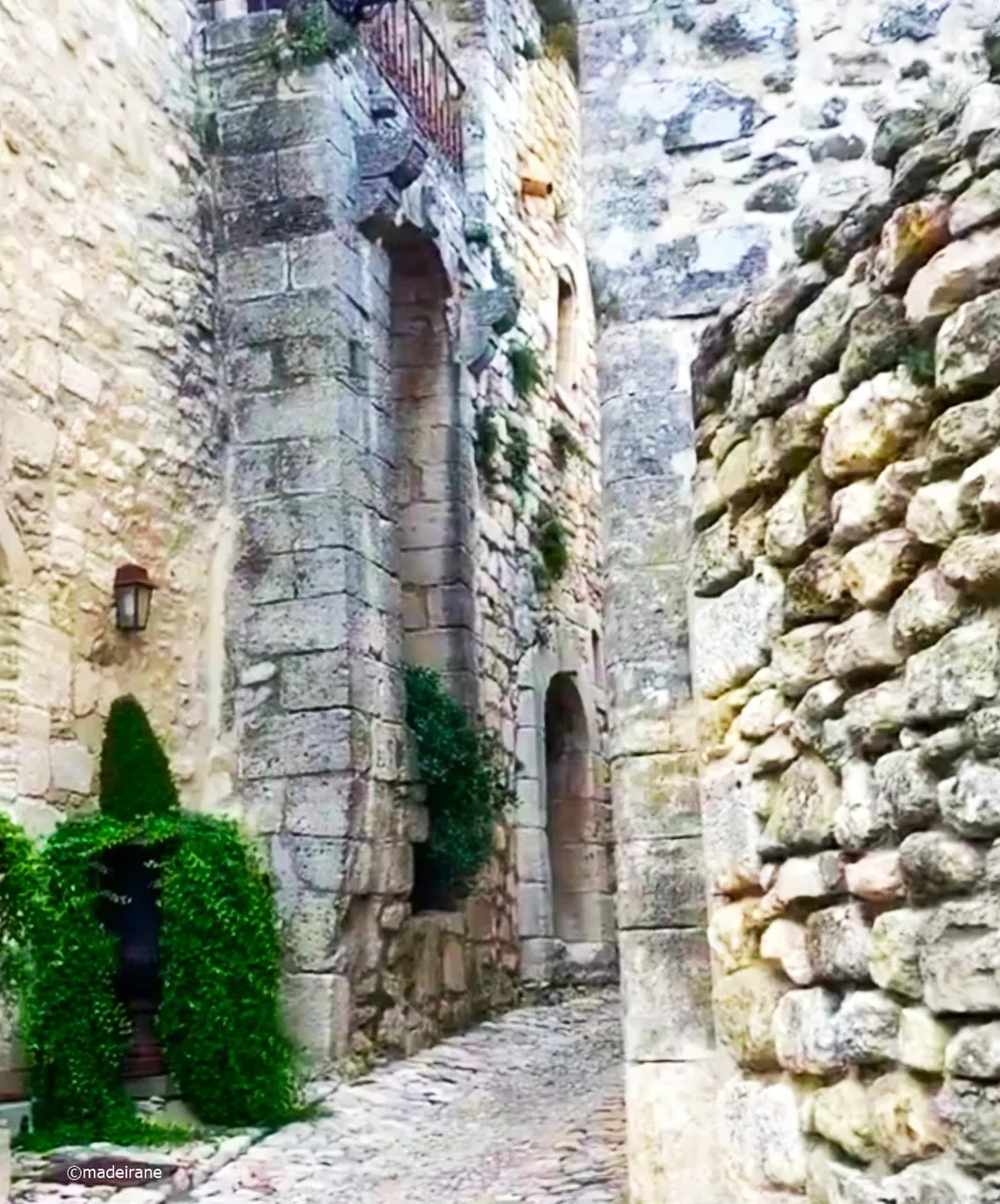
He restored one part of the castle and closed it to visits by ordinary tourists, only for his guests. And it was he who installed the sculptures here that you can see.
Not so far away stands one of the castle towers. And nearby everything is fenced with barbed wire, and behind it are either excavations or underground passages. But it is not possible to go there.

In fact, it only seems that there is only one floor left of the castle. But this is an optical illusion, since the castle is located on a mountain - these are its upper floors. Unfortunately, we could not take a photo from the other side of the castle.
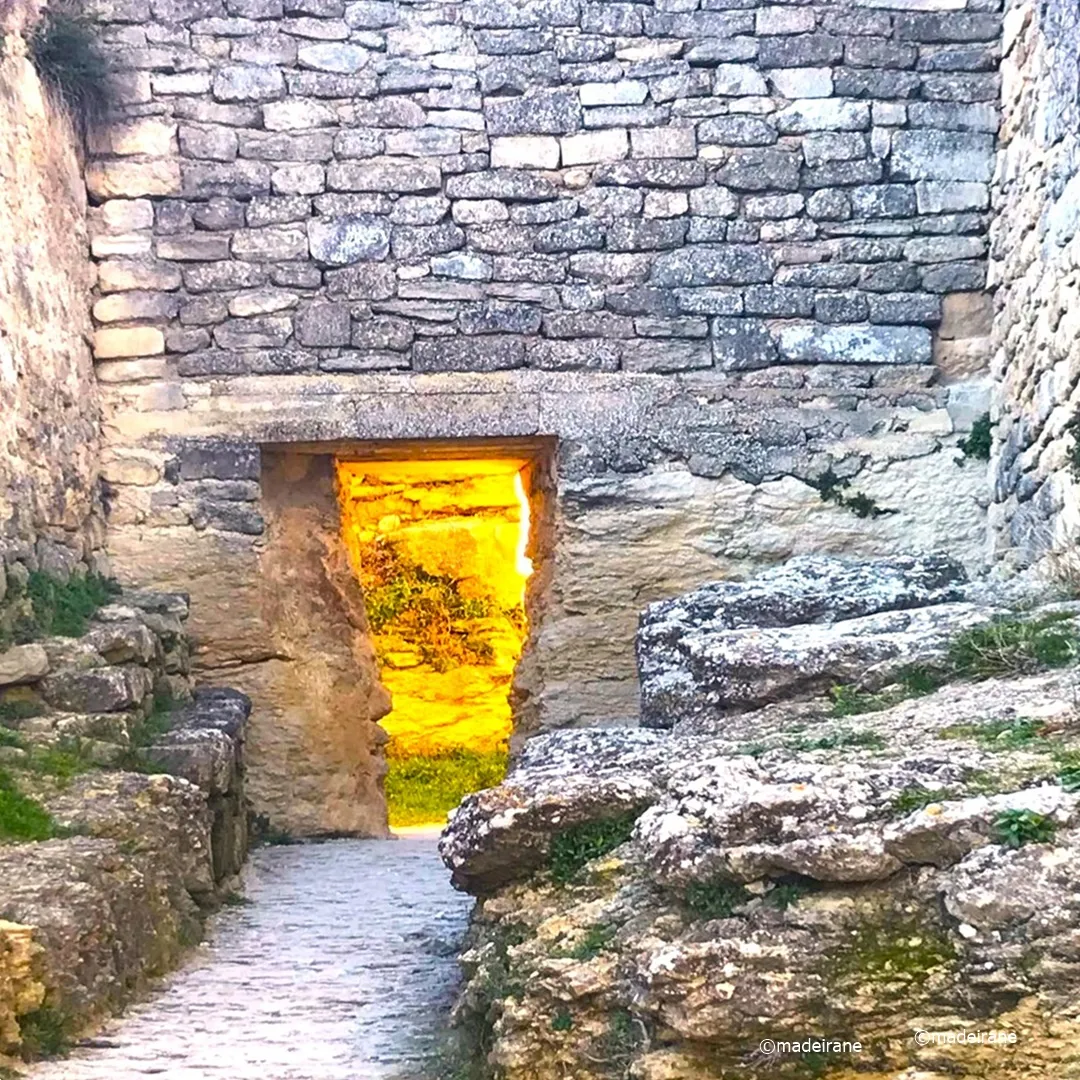
Surprisingly, the locals did not like the new owner of the castle. Partly due to the fact that he bought half the houses in the city in order to accommodate his friends and acquaintances there during some events. And according to local residents, because of this, the city is not growing, but is gradually dying. Although there are still about 400 people.
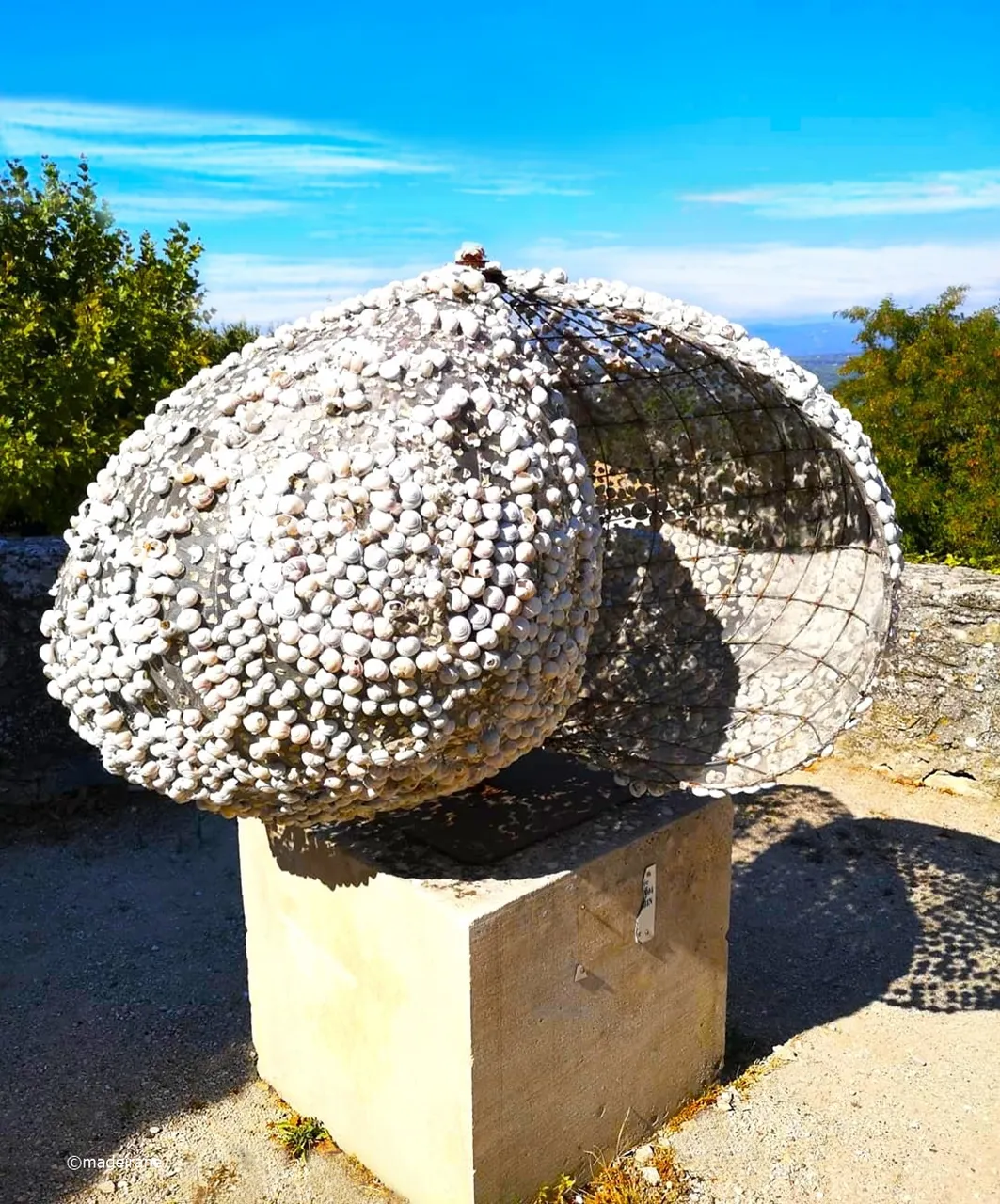
And we went back to the city going outside the city walls. The stone walls did not allow us to enjoy the whole view of the castle. I regret that when we were there, I didn’t know everything that I later read. So this place would be even more valuable for me.
💝💝💝💝💝💝💝💝💝💝
With love, @madeirane
Photos are taken by me.
© 2024
Translated from Lithuanian with DeepL.com (free version).
Apie patį viduramžių miestą Lacoste jau rašiau kiek anksčiau. Šiandien noriu atskirai papasakoti apie tai, kodėl šis miestelis toks garsus ir lankomas tiek daug turistų. Būtent, mano šiandienos apžvalga bus apie ekskursiją į markizo de Sado pilį (Prancūzija, Lacoste). Taip, išgirdote teisingai, tai iš tiesų tikra pilis, tikro markizo, kurią vietiniai gyventojai šiandien vadina „ištvirkimo griuvėsiais“.
Kaip ir daugelis šio regiono pilių, ji stovi pačioje kalno viršūnėje. Pilies papėdėje yra Lacoste miestas. Net nuo kelio ši pilis traukia kaip magnetas. Mes būtinai norėjome viską pamatyti iš arti ir užkopti į šio kalno viršūnę.
Net šio kalno papėdėje nežinojome, kas mūsų laukia, o dar daugiau - neįsivaizdavome, kokia tai garsi pilis. Ar pilis iš tiesų traukia žmones, sunku pasakyti, bet mums nebuvo įmanoma pravažiuoti pro ją. Tiesiog manau, kad tokias vietas reikia pažinti ir aplankyti.
Iš nedidelių vingiuotų Lacoste miestelio gatvelių išvažiuojame už miesto sienos ir nuo čia prasideda mūsų ekskursija į markizo de Sado pilį.
Kelias į pilį nėra asfaltuotas; iš tiesų tai apsauginis griovys, kuris kadaise buvo pripildytas vandens. Eidami juo, pamatėme naują tiltą į pilį.
Nuėjome į teritoriją priešais pilį ir pamatėme kelias skulptūras bei įėjimą į pilį. Nusprendę lipti į pilį, neįsivaizdavome, kas mūsų laukia viršuje, nes prieš tai internete nebuvau tikrinęs jokios nuotraukos. Todėl šiuolaikinės skulptūros mus šiek tiek nustebino.
Nors taip pat sunku pasakyti, kad pilis pasirodė esanti tikra pilis. Deja, tai labiau griuvėsiai nei pati pilis. Tačiau dalis jos vis dėlto buvo restauruota. Pirmoji skulptūra, prie kurios priartėjome, buvo ši. Ir ji mums nieko nepasakojo. Na, nebuvo aišku, kodėl čia tokios keistos skulptūros ir kuo ši pilis skiriasi nuo kitų šioje vietovėje esančių pilių.
Prie įėjimo į pilį buvo pavaizduotas žmogaus profilis, spėju, kad tai buvo markizo profilis, bet man atrodo, kad šiam profiliui galima pritaikyti bet kurį legendinį prancūzą ir jis tiks.
Ši pilis buvo pastatyta XI a. ir tada vadinosi Château Lacoste. Ji priklausė kilmingai Simiane'ų giminei. O gal ji būtų likusi eiline pilimi, kurių Prancūzijoje yra labai daug. Jei ji nebūtų perėjusi į markizo de Sado senelio rankas.Yra dvi hipotezės, kaip pilis atiteko de Sadų šeimai. 1627 m. vienas iš markizo protėvių vedė Žaną Baptistą ir Dianą Simiane.O antroji - kad 1716 m. Izabela Simiane pilį paliko savo pusbroliui Gasparui Fransua de Sadui.Tačiau iš tiesų nesvarbu kaip, svarbu, kam ji priklauso.
Donatjenas Alfonsas Fransua de Sadas (Donatien Alphonse François de Sade), kurį mes žinome kaip markizą de Sadą, labai mėgo šią pilį ir dauguma jo knygose aprašytų istorijų iš tikrųjų vyko šioje pilyje.
Šioje pilyje markizas de Sadas praleido daug laiko, ją perstatė ir pastatė teatrą 120 žiūrovų.Lacoste pilis buvo jo mėgstamiausia namų vieta, kurioje jis gyveno, atsiduodamas savo aistroms.
De Sade'ui viešint Prancūzijoje, vietiniai valstiečiai sukilo, užpuolė pilį, apiplėšė ją ir praktiškai akmuo po akmens išardė.Ir tai nenuostabu, nes tuo metu, kai markizas gyveno šioje pilyje, vietos gyventojams buvo tamsu, nes šiose vietose buvo pagrobta daugybė gražių merginų, nesunku atspėti, kokiais tikslais.Todėl vietiniai gyventojai turėjo didžiulę nuoskaudą markizui.
Po vandalizmo akto markizas pardavė pilies griuvėsius, kurie keliavo iš vieno savininko pas kitą. Po to pilis buvo atiduota į aukcioną ir parduota po akmenį. Todėl daugelio Lacoste namų sienose yra šios pilies akmenų.
Tik 1952 m. vietinis mokytojas Andre Bouer, sužavėtas markizo asmenybės kulto, dalimis nusipirko visą pilies erdvę ir daugelį metų stengėsi ją restauruoti. Beje, markizo vardas Prancūzijoje ilgą laiką buvo uždraustas, ir tik praėjusiame amžiuje imta ramiai kalbėti apie jo asmenybę, o istorikai ir biografai ėmė rašyti apie legendinę asmenybę, kuri save įamžino knygose.
Nuotraukos, deja, neleidžia suprasti, kokio dydžio buvo pilis.
Pasakojama, kad pilį restauravęs mokytojas mirė, o gyvenimo pabaigoje visiškai prarado protą ir prisistatė arba markizo protėviu, arba pačiu markizu. Jo žmona parašė laišką garsiam kurjeriui Pierre'ui Cardinui su pasiūlymu pirkti pilį, ir jis mielai sutiko. Ir nuo 2001 m. buvusi markizo de Sade'o buveinė priklauso jam.
Jis restauravo vieną pilies dalį ir uždarė ją paprastiems turistams, tik savo svečiams. Būtent jis čia įrengė skulptūras, kurias galite pamatyti.
Ne taip toli stovi vienas iš pilies bokštų. O netoliese viskas aptverta spygliuota viela, už jos - arba iškasos, arba požeminės perėjos. Tačiau ten patekti neįmanoma.
Tiesą sakant, tik atrodo, kad iš pilies likęs tik vienas aukštas. Bet tai tik optinė apgaulė, nes pilis stovi ant kalno - tai viršutiniai jos aukštai. Deja, nepavyko nufotografuoti iš kitos pilies pusės.
Bet kad įsivaizduotumėte, kas liko ir kad pilyje galima gyventi ir rengti triukšmingus vakarėlius, pateikiame nuotrauką, kurią padarėme nuo kelio. Aš ją tiesiog priartinau.
Keista, bet vietiniams gyventojams naujasis pilies savininkas nepatiko. Iš dalies dėl to, kad jis nusipirko pusę miesto namų, kad galėtų ten apgyvendinti savo draugus ir pažįstamus per kažkokius renginius. Ir, pasak vietos gyventojų, dėl to miestas ne auga, o pamažu miršta. Nors jame vis dar gyvena apie 400 žmonių.
O mes grįžome į miestą eidami už miesto sienų. Akmeninės sienos neleido mums pasimėgauti visu pilies vaizdu. Gailiuosi, kad kai ten buvome, nežinojau visko, ką vėliau perskaičiau. Tad ši vieta man būtų dar vertingesnė.